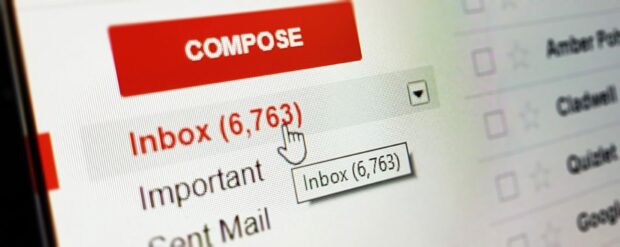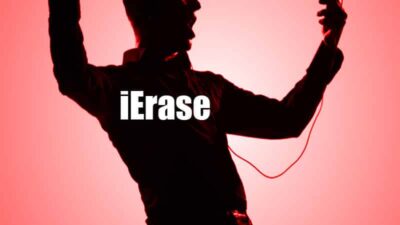TL;DR:
- Gmail started as a “20% time” side project based on a user’s complaint about existing webmail
- Offering 1GB free storage (500x competitors) was key to making it unnecessary to delete email
- Gmail email pioneered using JavaScript/Ajax to make a web app as responsive as desktop software
- Remaining invite-only for 3 years unintentionally fueled demand and a secondary market for invites
- Gmail’s core functionality and user experience has remained remarkably steadfast over 15 years
Google is now synonymous with email, but back in the early 2000s, the company was skeptical about launching a Google email service that might distract it from its core search business. The inspiration for Gmail came from an unexpected place – a user complaint to co-founder Larry Page about the woeful state of webmail, plagued by tiny storage limits and clunky, slow interfaces.
This struck a chord with Google engineer Paul Buchheit, who decided to take on the challenge of reinventing email as a “20 percent time” side project, guided by the philosophy that users should never have to delete messages or struggle to find them. In August 2001, after just one day of work, Buchheit had already created a search engine for his own email, a key building block for what would become the company’s Gmail email product.
How Google Took a Gamble on Gmail - And Reinvented Webmail Forever Share on XGmail Email – The Little Side Project That Could
The audacious goal of giving each user 1GB of free storage (500x what Microsoft‘s Hotmail email platform offered) seemed downright implausible at the time. But it was key to Gmail’s vision of making it unnecessary to ever delete or file messages. With searchable access to a massive archive, users could rely on Google’s core competency to quickly find any message.
To make that vision a reality, Buchheit and the small team of engineers working on the Gmail email project had to pioneer the use of web technologies like Javascript and Ajax that we now take for granted. These allowed Gmail to provide a responsive, app-like user experience in the browser that was unmatched by the clunky HTML interfaces of the day.
Gmail’s Early Privacy Controversies
Gmail’s contextual advertising, which analyzed the contents of messages to show relevant ads, quickly sparked a backlash from privacy advocates who saw it as crossing a line. A coalition of groups sent Google’s founders an open letter calling Gmail a “privacy disaster” and urging them to suspend the service.
While Google made efforts to explain and defend its approach, the controversy demonstrated the tension that would arise between the company’s engineering innovations and societal concerns over the increasing power of web giants to profile users for advertising purposes. In some ways, it foreshadowed later privacy controversies that would follow the company years later.
Unintended Exclusivity Fuels Demand

Whether by necessity or shrewd marketing, Gmail remained an invite-only beta for years after launch, with Google slowly doling out batches of coveted invitations that eager users bid up to $150 on eBay. Not until 2007 did Gmail finally exit beta and open to all.
Google’s decision to debut Gmail with a mind-blowing huge storage capacity of 1GB on April Fool’s Day was also very clever. But when people discovered that Gmail was not an April Fool’s Day prank, it soon became clear that Google was deadly serious about email. Today, with over 1.5 billion active users, Gmail has fulfilled its original vision of being the only email service you need. While competitors have since matched many of its individual features, none have quite replicated the magic formula that allows Gmail to remain largely unchanged decades later.
Microsoft’s Gmail Man Parody Accidentally Leaked on Internet
He’s everywhere and nowhere at the same time. He peeks at at every email subject at unreal time probing every sentence and all your punctuation. Got his nose in every colon and every situation… He’s the Gmail Man!
Gmail Has Stayed True To Its Mission
Amazingly, Google’s core email functionality and mission has remained steadfast since Gmail’s debut in 2004 – a remarkable feat for any software, let alone a web app. Gmail’s creator Paul Buchheit muses that while Gmail email solved the technical limitations that made email painful in 2004, the always-on culture it enabled has created a new set of issues that can’t be fixed with an algorithm.
The next time Google launches a product on April 1st, no one will immediately dismiss it as a prank again.
On #AprilFoolsDay in 2004, @gmail launched and completely reinvented email with 1GB free storage and lightning-fast search. Here's the crazy backstory of how it almost never happened. #EmailHistory #TechLore Share on X
Frank Wilson is a retired teacher with over 30 years of combined experience in the education, small business technology, and real estate business. He now blogs as a hobby and spends most days tinkering with old computers. Wilson is passionate about tech, enjoys fishing, and loves drinking beer.























 New Research Explains Why Google Search Sucks Now
New Research Explains Why Google Search Sucks Now
Leave a Reply
You must be logged in to post a comment.